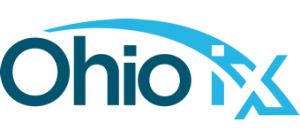Internet Exchange FAQ
The most commonly asked questions about Ohio IX. If you don’t see your question listed, please contact us.

Any Questions
Frequently Asked Questions
Ohio IX is an Internet exchange (IX), also known as an Internet exchange point (IXP) or peering point that allows Internet transport carriers, Internet service providers (ISPs), mobile and content providers, and other significant Internet users to exchange Internet traffic inexpensively through a common switch fabric usually on a settlement-free basis. Ohio IX reduces the portion of an ISP’s traffic that must be delivered via their upstream transit providers, thereby reducing the average per-bit delivery cost of their service. Furthermore, the increased number of paths learned through Ohio IX improves routing efficiency and fault-tolerance. By connecting to Ohio IX, members can peer with the router servers provided by Ohio IX, or with any other member, provided the members in question have reached a bilateral peering agreement.
Ohio IX offers its members complimentary use of redundant route servers to enhance scalability. Route servers enable members to take advantage of multi-lateral peering and thus immediately start exchanging routes, and traffic, with all other members also connected to the route servers. Use of multi-lateral peering via route servers also greatly reduces the configuration overhead compared to the traditional bi-lateral BGP mesh.
You can peer with any of the members of Ohio IX.
Inside of the Cologix data center and carrier hotel in Columbus, Ohio. Access is also available via remote switch operators throughout the state who extend transport back to the Ohio IX core.
An approved Ohio IX member must provide for the following:
- A border router connection (note: can be remote) to the port on an Ohio IX switch
- Configuration of such border router
- An exchange point IP address for the border router provided by Ohio IX
- An Autonomous System Number (ASN) to identify the member
- Two BGP sessions with the Ohio IX Route Servers (optional) or a bilateral peering agreement with one or more Ohio IX members (note: most often this is a verbal or “handshake” agreement)
Yes, and continued adherence by all Ohio IX members is required.
Member Port Summary
- Spanning tree shall be disabled (no BPDUs)
- Ethernet frames with a payload of up to 1500 bytes are supported. MTU settings must be configured accordingly
- Multicasts, Broadcasts, and Unknown Unicasts are limited to 100M
- Only one MAC address per port is allowed
- For recommendations on how to configure your equipment, see the excellent AMS-IX Config Guide
Yes. You can view our note from the Department of the Treasury here:
